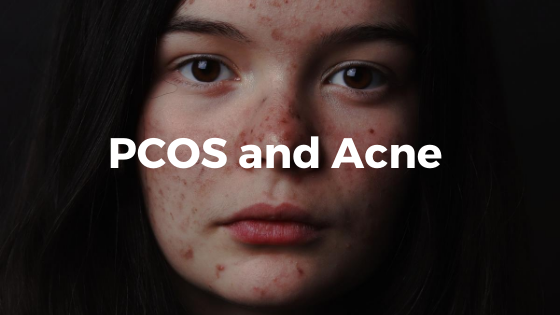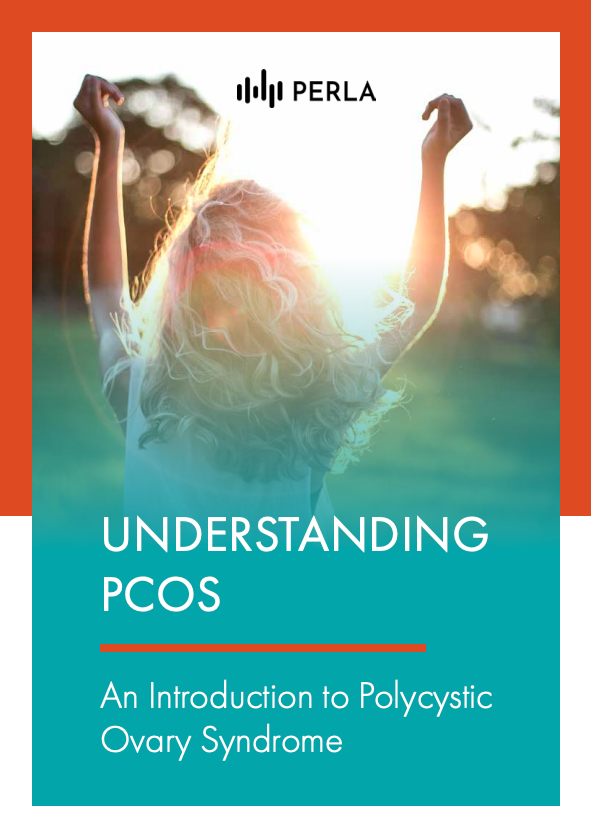Acne is one of the classic symptoms of polycystic ovary syndrome (PCOS). While it can be very distressing, there are many treatments available for this condition, and there are ways to control your symptoms while waiting for your medications to start working.
Living with Acne and PCOS
Persistent acne, unwanted hair growth, androgenic hair loss, and occasionally, acanthosis nigricans are signs of androgen excess, which could indicate that you have PCOS.1 Women with PCOS are often seen by dermatologists first, where it is not routine to ask about menstrual cycles.2 Hence, many are undiagnosed and are not given proper treatment.
For those who are diagnosed properly, treatment tends to focus on correcting the menstrual cycle and improving infertility. So less serious symptoms such as acne, hirsutism, and hair thinning are sometimes not prioritized or discussed enough.
It’s important to address the physical manifestations of PCOS since they are linked to low self-esteem and poor body image3,4 which have a negative impact on mental health.5
How Acne Develops
Acne is a chronic inflammatory disorder of the pilosebaceous unit, a skin structure composed of the hair shaft, hair follicle, sebaceous gland, and arrector pili muscles—a group of muscles that contract and cause the hair to stand on end when stimulated.
According to several studies, acne and hirsutism are the most common symptoms of PCOS.6,7 The syndrome has been observed in women with persistent acne, late-onset acne, and acne resistant to conventional treatment.8
Individuals with acne tend to have a higher rate of oil secretion than those who do not have acne. Oily skin and acne are usually due to your body producing higher than normal amounts of male hormones.
How is it Connected to PCOS?
PCOS is associated with increased androgen levels in the blood. Testosterone causes the sebaceous glands in your skin to overproduce an oily, waxy substance called sebum. The combination of sebum and dead skin cells forms a comedo (clogged pore) which allows the proliferation of the Propionibacterium acnes (P. acnes) bacteria—the bacteria that causes acne.9
Sebum keeps your skin and hair moisturized by preventing water loss. It is essential in maintaining the skin barrier. However, excess sebum can result in acne and other inflammatory skin disorders.
If your male hormone levels are high, you may develop acne on your face, neck, chest, or back because the hair follicles in these areas are sensitive to androgen. But remember that increased sebum production is only one of several factors that contribute to the development of acne. Other factors include rapid shedding of skin cells, colonization of acne bacteria, and inflammation.10
How to Treat Hormonal Acne
To start treating your acne, it’s best to work with a dermatologist. Together you can find the best treatment approach for your specific situation and your skin. Ask your doctor or healthcare provider who they would recommend to you.
The treatment for hormonal acne depends on the severity of the condition. Mild acne responds well with topical medications containing retinoids, exfoliants such as salicylic acid, antiseptic such as benzoyl peroxide, and antibiotics such as clindamycin and erythromycin.11
The goals of therapy for PCOS-related acne are to reduce sebum production, clear existing lesions, and reduce the colonization of bacteria and inflammation.12 Acne medications may take several months to improve symptoms and may have undesirable side effects, particularly the ones you take by mouth.
To treat acne, there are two types of treatment – systemic treatment, which is taken orally, and topical agents, which are applied to the skin surface. Always check with your dermatologist or doctor before starting or stopping any of the treatments, and reach out to them if you have any questions or concerns.
Systemic Treatment
Hormonal treatment. Oral contraceptives and antiandrogens are first-line treatment for acne in women who are not planning to conceive. Both are effective in decreasing acne. Common hormonal medications include:
- Combination oral contraceptive pills
- Anti-androgens such as Spironolactone
Oral antibiotics. Moderate to severe acne may initially require an oral antibiotic. This reduces the number of bacteria on the skin and consequently reduces inflammation.
Isotretinoin. A systemic retinoid that is used in severe cases of acne that do not respond to oral antibiotics. It addresses all the factors that cause acne but can cause a number of serious side effects.
Topical Agents
Topical medications are applied directly to the skin. They may cause local reactions but they don’t carry the risk of serious side effects common in systemic treatments.
- Benzoyl peroxide. A bactericide that is effective against P. acnes. It is the active ingredient in numerous anti-acne OTC products, including soaps, cleansers, foams, creams, and lotions.
- Retinoids. A derivative of Vitamin A that decreases sebum production and inflammation by increasing the turnover of the skin.
- Azelaic acid. An antibacterial and anti-inflammatory agent that is well tolerated. It may cause hyperpigmentation in women with dark complexions.
Treatments for hormonal acne are generally well tolerated but may also cause skin dryness, irritation, redness, and breakouts. Make sure to discuss all of your treatments with your dermatologist or doctor before starting them, follow the instructions on the patient information leaflet and reach out to your healthcare providers about any questions or concerns you have. You may need to try different treatments or a combination of treatments before you find the one that works for you, just continue working with your care team and follow their advice.
Sources:
- Balen AH, ed. Current Management of Polycystic Ovary Syndrome. RCOG Press; 2010.
- Sivayoganathan D, Maruthini D, Glanville JM, Balen AH. Full investigation of patients with polycystic ovary syndrome (PCOS) presenting to four different clinical specialties reveals significant differences and undiagnosed morbidity. Hum Fertil (Camb). 2011;14(4):261-265.
- Bazarganipour F, Ziaei S, Montazeri A, Foroozanfard F, Kazemnejad A, Faghihzadeh S. Body image satisfaction and self-esteem status among the patients with polycystic ovary syndrome. Iran J Reprod Med. 2013;11(10):829-836.
- de Niet JE, de Koning CM, Pastoor H, et al. Psychological well-being and sexarche in women with polycystic ovary syndrome. Human Reproduction. 2010;25(6):1497-1503. doi:10.1093/humrep/deq068
- Açmaz G, Albayrak E, Acmaz B, et al. Level of anxiety, depression, self-esteem, social anxiety, and quality of life among the women with polycystic ovary syndrome. The Scientific World Journal. 2013;2013:1-7. doi:10.1155/2013/851815
- Azziz R, Sanchez LA, Knochenhauer ES et al. Androgen excess in women: experience with over 1000 consecutive patients. J Clin Endocrinol Metab 2004; 89: 453–462.
- Lowenstein E J Diagnosis and management of the dermatologic manifestations of the polycystic ovary syndrome Dermatologic Therapy, 2006; 19: 210–223,
- Bunker CB, Newton JA, Kilborn J, Patel A, Conway GS, Jacobs HS, Greaves MW, Dowd PM Most women with acne have polycystic ovaries. Br J Dermatol. 1989;121:675-680.
- Archer JS, Chang RJ. Hirsutism and acne in polycystic ovary syndrome. Best Practice & Research Clinical Obstetrics & Gynaecology. 2004;18(5):737-754. doi:10.1016/j.bpobgyn.2004.05.007
- Makrantonaki E, Ganceviciene R, Zouboulis C. An update on the role of the sebaceous gland in the pathogenesis of acne. Dermatoendocrinol. 2011;3(1):41-49. doi:10.4161/derm.3.1.13900
- Kovacs GT, Norman R, eds. Polycystic Ovary Syndrome. 2nd ed. Cambridge University Press; 2001. doi:10.1017/CBO9780511545191
- McAvey B, Lieman H. Managing the pcos-related symptoms of hirsutism, acne, and hair loss. In: Pal L, ed. Polycystic Ovary Syndrome. Springer New York; 2014:223-242. doi:10.1007/978-1-4614-8394-6_13
- Pace JL. The polycystic ovary syndrome and acne. In: Zouboulis CC, Katsambas AD, Kligman AM, eds. Pathogenesis and Treatment of Acne and Rosacea. Springer Berlin Heidelberg; 2014:569-577. doi:10.1007/978-3-540-69375-8_76


